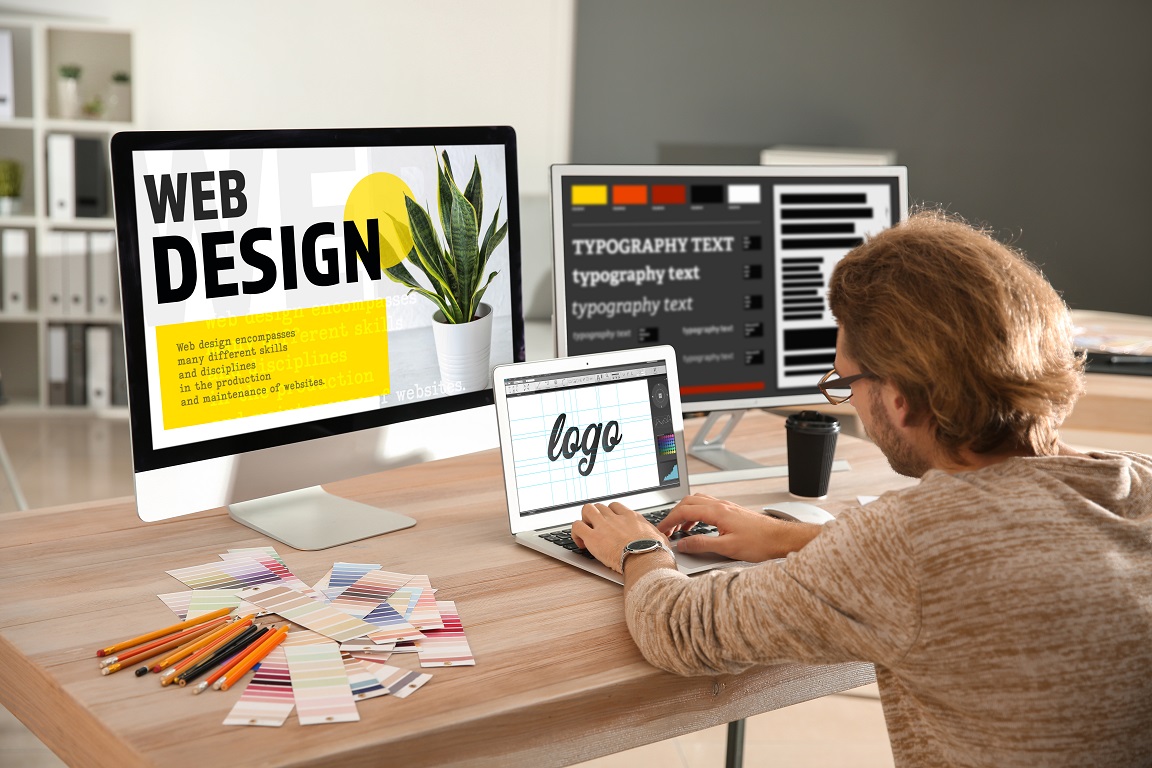Proven Strategies for Enhancing Your Site through Superior Web Design
A Detailed Overview of the Ideal Practices in Website Design for Creating User-friendly and Accessible Online Systems
The effectiveness of an online system hinges considerably on its layout, which need to not just attract individuals yet additionally direct them flawlessly via their experience. Ideal practices in website design incorporate a series of approaches, from responsive designs to accessible navigation frameworks, all aimed at promoting instinctive interactions. Recognizing these concepts is essential for designers and programmers alike, as they directly influence user fulfillment and retention. Nonetheless, the details of each method usually disclose much deeper implications that can transform a standard user interface into a phenomenal one. What are the crucial elements that can raise your system to this level?
Understanding Customer Experience
Understanding customer experience (UX) is pivotal in web design, as it straight affects how site visitors communicate with a website. A properly designed UX makes certain that individuals can browse a website intuitively, accessibility the info they look for, and total desired activities, such as making a purchase or authorizing up for a newsletter.
Trick aspects of efficient UX design include functionality, accessibility, and aesthetics. Usability concentrates on the convenience with which individuals can complete tasks on the web site. This can be achieved via clear navigation structures, sensible material company, and receptive comments systems. Availability ensures that all customers, consisting of those with impairments, can interact with the site successfully. This involves sticking to developed guidelines, such as the Internet Web Content Accessibility Guidelines (WCAG)
Aesthetic appeals play an important role in UX, as aesthetically appealing designs can improve user satisfaction and interaction. Color pattern, typography, and imagery ought to be thoughtfully selected to create a cohesive brand identification while additionally promoting readability and understanding.
Ultimately, prioritizing customer experience in website design promotes greater customer fulfillment, urges repeat visits, and can significantly improve conversion rates, making it a basic element of effective digital strategies. (web design)
Value of Responsive Style
Receptive design is an essential element of modern web development, making certain that web sites supply an optimum watching experience across a large range of devices, from desktops to smartphones. As customer behavior significantly moves in the direction of mobile browsing, the requirement for web sites to adapt effortlessly to various display sizes has actually ended up being critical. This flexibility not only improves use but additionally considerably effects customer engagement and retention.
A responsive design utilizes fluid grids, adaptable pictures, and media queries, enabling a cohesive experience that preserves capability and visual honesty regardless of device. This approach eliminates the need for users to zoom in or scroll flat, leading to a more intuitive interaction with the content.
Additionally, search engines, especially Google, prioritize mobile-friendly sites in their positions, making receptive design necessary for keeping presence and accessibility. By adopting receptive design concepts, businesses can reach a broader target market and boost conversion rates, as individuals are a lot more most likely to involve with a site that uses a smooth and regular experience. Ultimately, responsive style is not just a visual choice; it is a tactical need that reflects a dedication to user-centered layout in today's electronic landscape.
Simplifying Navigating Frameworks
A well-structured navigation system is vital for enhancing the user experience on any site. Streamlining navigating structures not just aids users in discovering information promptly but additionally promotes engagement and minimizes bounce rates. To accomplish this, internet developers must prioritize clearness via the usage of simple tags and classifications that reflect the web content properly.

Integrating a search feature further improves usability, allowing users to locate material straight. Furthermore, carrying out breadcrumb routes can supply individuals with context concerning their area within the website, promoting simplicity of navigation.
Mobile optimization is another important aspect; navigating ought to be touch-friendly, with plainly specified web links and switches to suit smaller sized displays. By decreasing the variety of clicks needed to gain access to web content and guaranteeing that navigation corresponds across all pages, developers can create a smooth user experience that motivates expedition and decreases irritation.
Prioritizing Accessibility Requirements
Around 15% of the worldwide populace experiences some type of special needs, making it see it here crucial for web designers to prioritize availability standards in their tasks. Accessibility encompasses different facets, consisting of visual, auditory, cognitive, and motor problems. By adhering to developed standards, such as the Internet Material Availability Standards (WCAG), developers can develop comprehensive digital experiences that satisfy all users.
One basic method is to guarantee that all content is perceivable. This consists of providing different text for photos and making certain that video clips have records or inscriptions. Keyboard navigability is critical, as lots of users count on keyboard faster ways rather than mouse interactions.
 In addition, shade comparison must be meticulously considered to suit people with visual impairments, making sure that message is legible versus its history. When designing types, labels and mistake messages should be clear and descriptive to aid individuals in completing tasks effectively.
In addition, shade comparison must be meticulously considered to suit people with visual impairments, making sure that message is legible versus its history. When designing types, labels and mistake messages should be clear and descriptive to aid individuals in completing tasks effectively.Last but not least, performing functionality testing with individuals who have handicaps can supply invaluable understandings - web design. By prioritizing accessibility, web developers not just follow legal standards yet additionally increase their audience reach, cultivating a much more comprehensive online atmosphere. This commitment to access is crucial for a user-friendly and absolutely navigable internet experience
Utilizing Aesthetic Hierarchy
Clearness in layout is vital, and utilizing aesthetic power structure plays a critical role in attaining it. Visual pecking order describes the arrangement and discussion of elements in a manner that plainly indicates their value and guides customer interest. By strategically using size, shade, comparison, and spacing, developers can produce an all-natural flow that routes customers via the web content effortlessly.
Utilizing bigger font styles for headings and smaller ones for body text develops a clear difference between areas. Furthermore, using contrasting backgrounds or bold colors can draw focus to vital details, such as call-to-action switches. White room is just as important; it helps to prevent mess and permits users to focus on the most crucial elements, boosting readability and overall individual experience.
Another key aspect of visual hierarchy is making use of imagery. Pertinent photos can boost understanding and retention of details while likewise separating text to make content much more digestible. Ultimately, a well-executed visual hierarchy not only boosts navigating however additionally promotes an user-friendly interaction with the site, making it a lot more likely discover this info here for users to accomplish their goals efficiently.
Verdict

In summary, adherence to finest techniques in website design is important for producing instinctive and accessible online platforms. Highlighting responsive style, streamlined navigating, and access requirements promotes a easy to use and comprehensive setting. In addition, the reliable use of visual hierarchy improves individual engagement and readability. By prioritizing these elements, web developers can considerably enhance user experience, guaranteeing that on the internet platforms meet the diverse needs of all individuals while promoting efficient interaction and complete satisfaction.
The efficiency of an online system hinges dramatically on its layout, which have to not just draw in individuals however also guide them perfectly through their experience. By adopting responsive style principles, organizations can get to a wider target market and improve conversion prices, as customers are more likely to involve with a website browse around here that provides a constant and smooth experience. By sticking to established standards, such as the Web Web Content Availability Guidelines (WCAG), designers can develop inclusive electronic experiences that cater to all individuals.
White room is similarly important; it aids to avoid mess and permits customers to focus on the most vital aspects, improving readability and total customer experience.
By focusing on these aspects, internet developers can substantially improve individual experience, guaranteeing that online systems satisfy the varied needs of all customers while helping with reliable interaction and satisfaction.